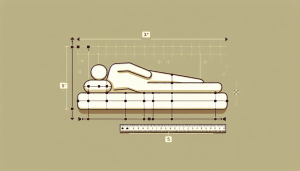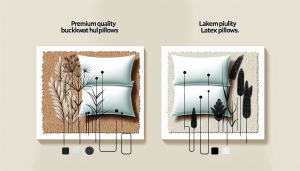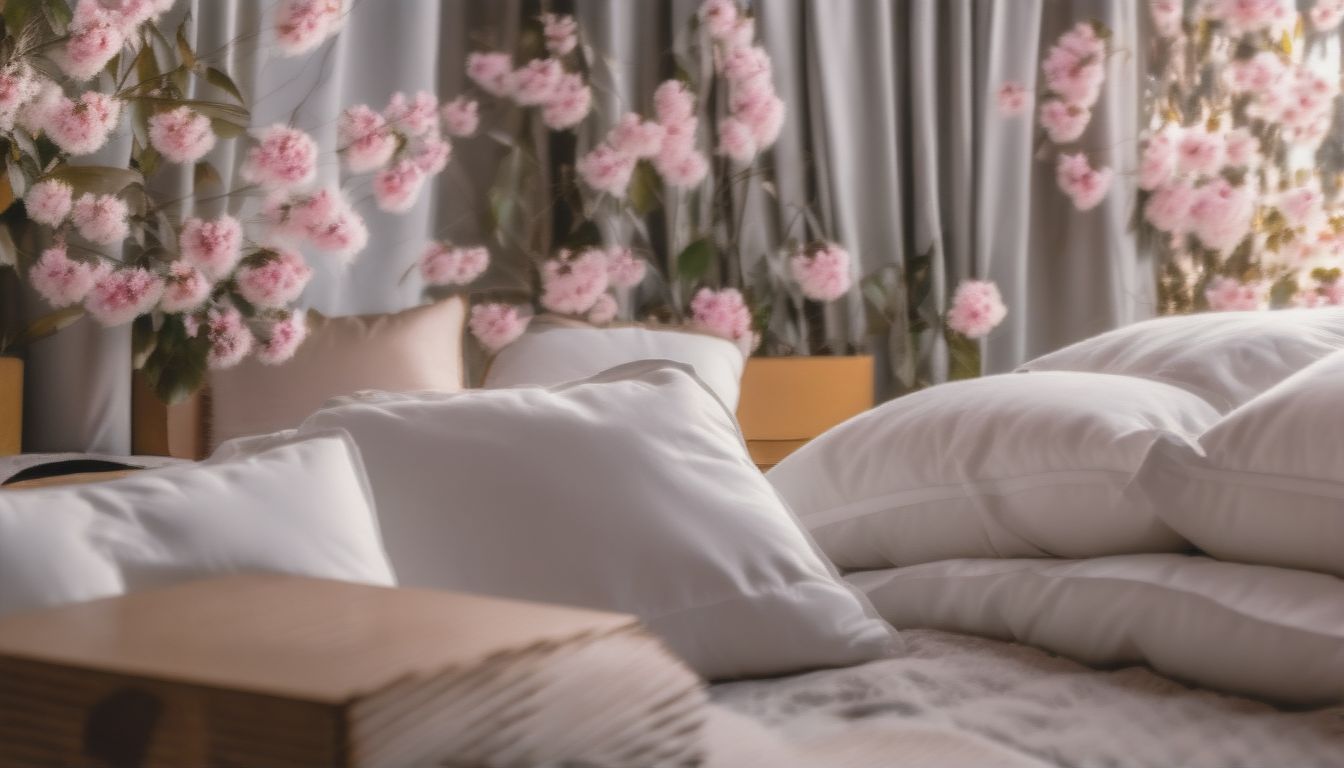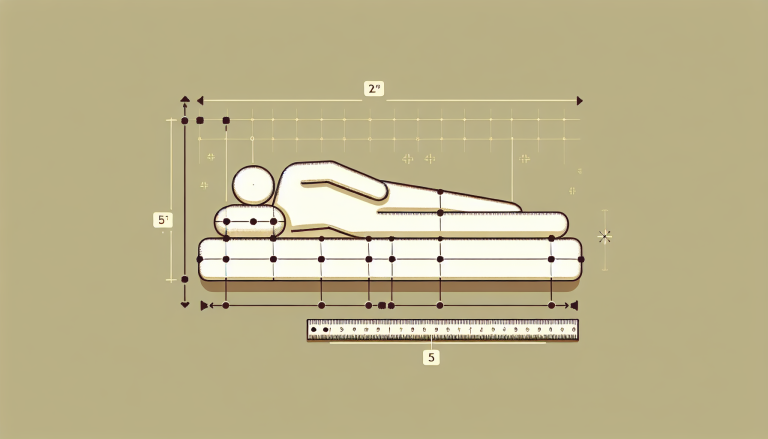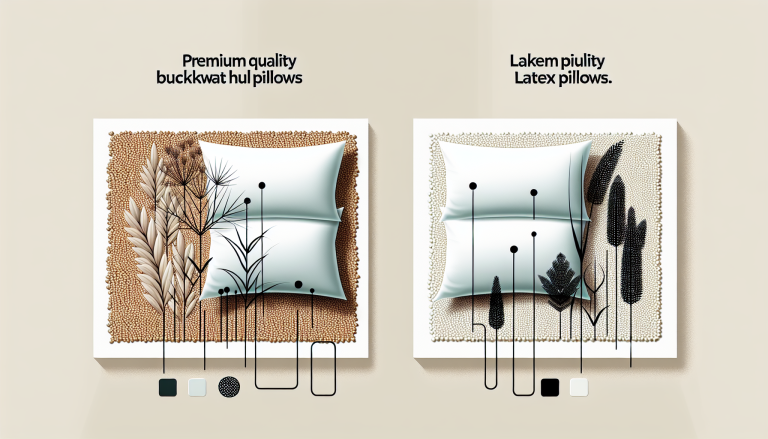Are you in search of the perfect goose down duvet to keep you warm and comfortable throughout the night? With so many options available, it can be overwhelming to know where to start. In this comprehensive guide, we’ll break down everything you need to know about goose down duvets, from fill power and construction to care and maintenance, helping you make an informed decision for a restful night’s sleep.
Understanding Down Duvets
What is Down?
Down refers to the soft, fluffy undercoating found beneath the feathers of geese or ducks. When it comes to duvets, goose down is generally considered superior to duck down due to its larger clusters and higher fill power, which translates to better insulation and loft.
Fill power is a measure of the down’s quality and insulating ability, with higher numbers indicating better performance. A fill power of 600 or higher is considered excellent for a goose down duvet.
It’s important to choose responsibly sourced down to ensure the humane treatment of the birds. Look for certifications like the Responsible Down Standard (RDS) or the Global Traceable Down Standard (TDS).
Benefits of Down Duvets
Goose down duvets offer several advantages over other types of bedding:
- Warmth and fluffiness: The high loft and insulating properties of goose down provide exceptional warmth without the weight.
- Breathability and moisture-wicking: Down allows air to circulate and helps regulate body temperature, preventing overheating and night sweats.
- Lightweight and compressible: Down duvets are easy to store and transport, making them ideal for travel or small living spaces.
Down Alternatives
For those with allergies or ethical concerns, there are several down alternatives available:
- Eucalyptus fabric: Made from sustainable eucalyptus fibers, this material is naturally hypoallergenic, moisture-wicking, and temperature-regulating.
- Recycled polyester fill: Eco-friendly and hypoallergenic, recycled polyester provides a similar level of warmth and loft to down.
- Cooling duvet technology: Innovative materials like phase-change polymers or cooling gels help regulate body temperature for a comfortable sleep.
Duvet Construction
Baffle Box Design
A baffle box construction features vertical walls of fabric sewn between the top and bottom layers of the duvet, creating individual pockets that prevent the down from shifting and clumping. This design offers several benefits:
- Preventing down leakage: The enclosed pockets keep the down in place, minimizing the risk of leakage through the seams.
- Maintaining even fill distribution: Baffle boxes ensure that the down remains evenly distributed throughout the duvet, eliminating cold spots.
- Noise level considerations: The baffle box construction helps reduce the rustling sound associated with some duvets, providing a quieter sleep experience.
Shell Materials
The duvet shell plays a crucial role in the overall comfort and durability of the duvet. Cotton is the most common material, with several factors to consider:
- Thread count and weave types: Higher thread counts (e.g., 400+) and tighter weaves like sateen or percale provide a softer, more durable shell.
- Oeko-Tex certifications: Look for duvets with Oeko-Tex Standard 100 certification, ensuring that the materials are free from harmful substances.
Warmth and Insulation
Fill Power Ratings
Fill power is a key factor in determining the warmth and insulating properties of a goose down duvet. Here’s a general guide:
| Fill Power | Warmth Level | Ideal Climate |
|---|---|---|
| 400-500 | Light | Hot summers, warm rooms |
| 600-700 | Medium | Cool summers, moderate winters |
| 800+ | High | Cold winters, cool rooms |
An all-season duvet with a fill power of 600-700 is suitable for most climates, while a lightweight duvet with a lower fill power is ideal for warmer months or those who sleep hot.
Heat Retention
Several factors contribute to a duvet’s ability to retain heat:
- Loft and fluffiness: Higher fill powers and baffle box construction promote better loft and fluffiness, trapping more air for insulation.
- Breathability and temperature regulation: Down’s natural breathability allows excess heat and moisture to escape, preventing overheating.
- Hypoallergenic properties: Goose down is naturally resistant to dust mites and other allergens, making it a good choice for those with sensitivities.
Duvet Covers
Materials and Weaves
Duvet covers protect your duvet and add a decorative touch to your bedding. Common materials include:
- Cotton percale: A crisp, lightweight weave that’s cool and breathable, ideal for warmer months.
- Sateen and jacquard: Softer, heavier weaves with a subtle sheen, providing a more luxurious feel.
- Eucalyptus and other eco-friendly options: Sustainable materials that offer natural temperature regulation and moisture-wicking properties.
Design and Aesthetics
Duvet covers come in a wide range of colors, patterns, and designs to suit any style preference. Look for these features:
- Corner loops and ties: These help secure the duvet in place, preventing shifting and bunching.
- Reversible designs: Double-sided covers offer versatility and value, allowing you to switch up your bedding look.

Care and Maintenance
Washing and Drying
Proper care is essential for maintaining the longevity and performance of your goose down duvet:
- Machine washable duvets: Many duvets are machine washable, but always check the care label for specific instructions.
- Tumble drying vs. air drying: Tumble drying on low heat with a few clean tennis balls can help fluff the down and prevent clumping. Air drying is gentler but may take longer.
- Dry cleaning recommendations: Some luxury duvets may require professional dry cleaning to preserve their quality.
Fluffing and Storing
To keep your duvet fluffy and lofty, follow these tips:
- Maintaining loft and fluffiness: Regularly shake and fluff your duvet to redistribute the down and prevent compression.
- Proper storage techniques: Store your duvet in a breathable cotton bag or cover when not in use to protect it from dust and moisture.
- Rotating duvets: If you have multiple duvets, rotate them seasonally to extend their lifespan and maintain even wear.
Ethical and Sustainable Considerations
Responsible Down Sourcing
When shopping for a goose down duvet, consider the ethical implications of down production:
- Traceability and auditing: Look for brands that provide transparency about their down sourcing and participate in third-party audits.
- Animal welfare standards: Choose duvets with certifications like RDS or TDS, ensuring that the down comes from birds that were treated humanely.
- Recycled and repurposed down: Some brands offer duvets made with recycled or repurposed down, reducing waste and environmental impact.
Eco-Friendly Materials
In addition to responsible down sourcing, consider duvets made with eco-friendly materials:
- Organic cotton: Grown without harmful pesticides or chemicals, organic cotton is a more sustainable option for duvet shells.
- Eucalyptus and bamboo fabrics: These renewable, biodegradable materials offer natural moisture-wicking and temperature-regulating properties.
- Recycled polyester fill: Made from post-consumer plastic waste, recycled polyester provides an eco-friendly alternative to virgin polyester.
Top Goose Down Duvet Recommendations
Based on factors like fill power, construction quality, and customer reviews, here are our top picks for the best goose down duvets:
Budget-Friendly Option
Puredown All-Season White Goose Down Comforter
- Fill Power: 600
- Shell: 100% cotton, 233 thread count
- Price: $99.99 (Queen)
This affordable duvet offers excellent value for its price point, with a 600 fill power and a soft cotton shell. Customers praise its fluffiness and warmth, making it a great choice for those on a budget.
Mid-Range Option
Brooklinen Down Comforter
- Fill Power: 700
- Shell: 100% long-staple cotton sateen, 400 thread count
- Price: $359 (Full/Queen)
Brooklinen’s down comforter features a baffle box construction and a luxurious sateen shell, providing exceptional warmth and comfort. With a 700 fill power and a 365-day return policy, it’s a reliable choice for those willing to invest in quality.
Luxury Option
Parachute Down Duvet Insert
- Fill Power: 750
- Shell: 100% long-staple cotton sateen, 380 thread count
- Price: $399 (Full/Queen)
For the ultimate in luxury, Parachute’s down duvet insert boasts a 750 fill power and a premium sateen shell. The baffle box construction ensures even distribution of the down, while the double stitching prevents leakage. Customers rave about its cloud-like fluffiness and temperature regulation.
Choosing the Right Duvet
Considering Your Needs
When selecting a goose down duvet, think about your specific needs and preferences:
- Climate and room temperature: Choose a fill power and weight appropriate for your climate and sleeping environment.
- Sleep preferences and position: Consider whether you tend to sleep hot or cold, and if you prefer a heavier or lighter feel.
- Allergies and sensitivities: If you have allergies, look for hypoallergenic options or down alternatives.
Size and Fit
Ensure that you choose a duvet that fits your mattress properly:
- Mattress depth and dimensions: Measure your mattress to determine the appropriate duvet size.
- Overhang and drape: Personal preference, but a typical overhang is 12-18 inches on each side.
- Duvet cover sizing: Make sure your duvet cover is slightly larger than your duvet to allow for ease of use and a tailored look.
Conclusion
Investing in a high-quality goose down duvet can greatly enhance your sleep experience, providing warmth, comfort, and luxury. By considering factors like fill power, construction, and responsible sourcing, you can find the perfect duvet to suit your needs and preferences.
Remember to choose the appropriate size and weight for your climate and sleeping style, and to care for your duvet properly to ensure its longevity. With the right goose down duvet, you’ll be well on your way to a cozy and restful night’s sleep.

Frequently Asked Questions
1. What is the difference between goose down and duck down in duvets?
Goose down is generally considered superior to duck down due to its larger down clusters and higher fill power, which translates to better insulation and loft. However, high-quality duck down can still provide excellent warmth and comfort.
2. How do I choose the right fill power for my goose down duvet?
Fill power refers to the fluffiness and insulating ability of the down. A fill power of 600-700 is ideal for an all-season duvet, while 800+ is perfect for colder climates or those who prefer extra warmth. For warmer climates or hot sleepers, a lightweight duvet with a fill power of 400-500 may be more suitable.
3. What is the best thread count for a goose down duvet’s cotton shell?
A thread count of 300-500 is considered optimal for a duvet shell, as it provides a balance of softness, breathability, and durability. Higher thread counts may feel more luxurious but can compromise the duvet’s temperature regulation and noise level.
4. How do I ensure my goose down duvet is ethically sourced and sustainable?
Look for certifications like the Responsible Down Standard (RDS) or the Global Traceable Down Standard (TDS), which ensure that the down comes from humanely treated birds. Choose duvets with organic cotton shells or recycled polyester fill for a more eco-friendly option.
5. Can I machine wash my goose down duvet at home?
Many goose down duvets are machine washable, but always check the care label for specific instructions. Use a gentle cycle with mild detergent and dry on low heat with clean tennis balls to fluff the down and prevent clumping. Some luxury duvets may require professional dry cleaning to maintain their quality.
6. What is the best way to store my goose down duvet when not in use?
To preserve your duvet’s loft and fluffiness, store it in a breathable cotton bag or cover in a cool, dry place. Avoid compression and exposure to moisture or direct sunlight, which can damage the down clusters and compromise the duvet’s insulating properties.
7. How long does a high-quality goose down duvet typically last?
With proper care and maintenance, a well-constructed goose down duvet can last 10-15 years or more. Investing in a duvet with double stitching, piped edges, and baffle box construction can help extend its lifespan and prevent down leakage. Regular fluffing and airing can also help maintain the duvet’s loft and warmth over time.

